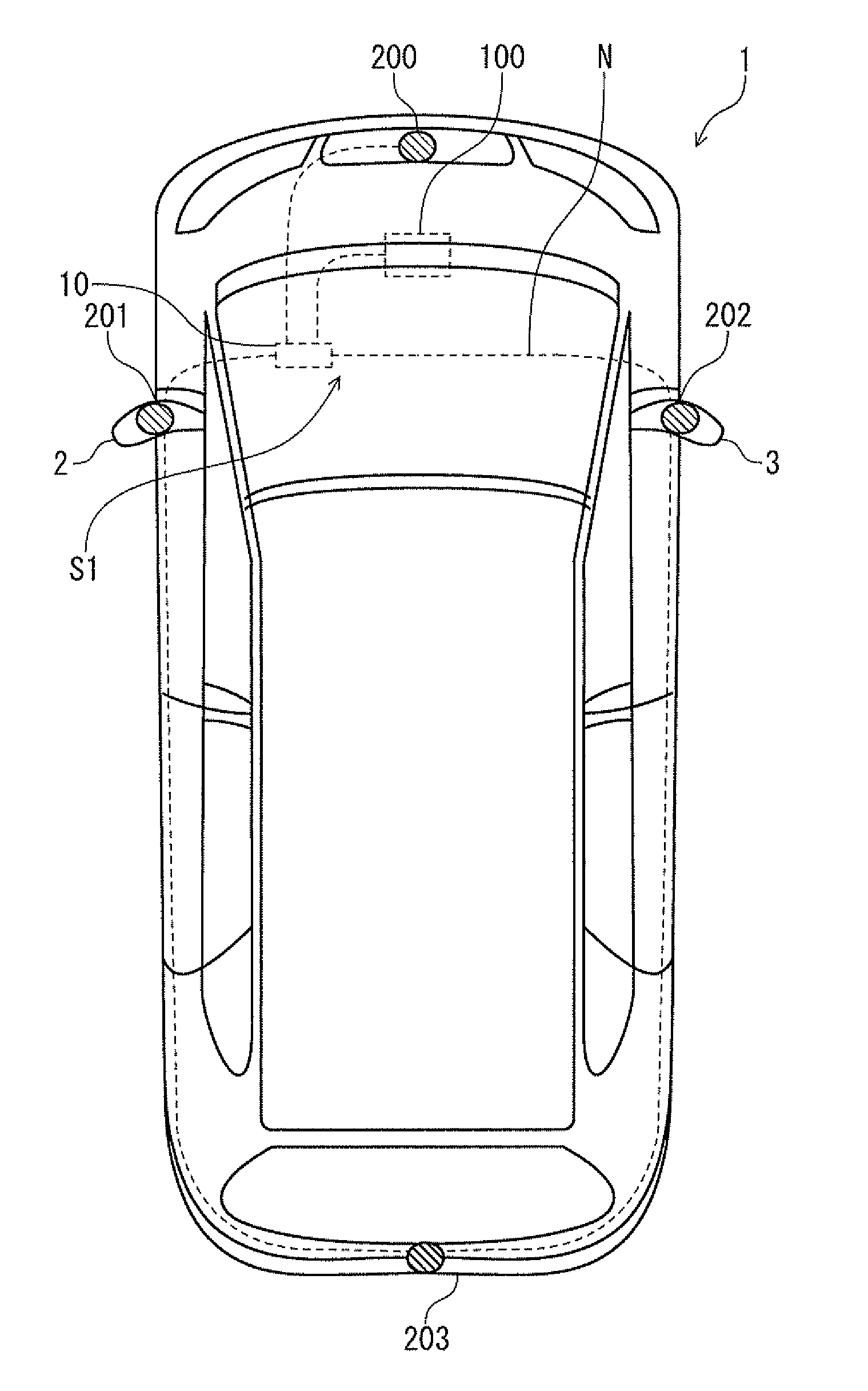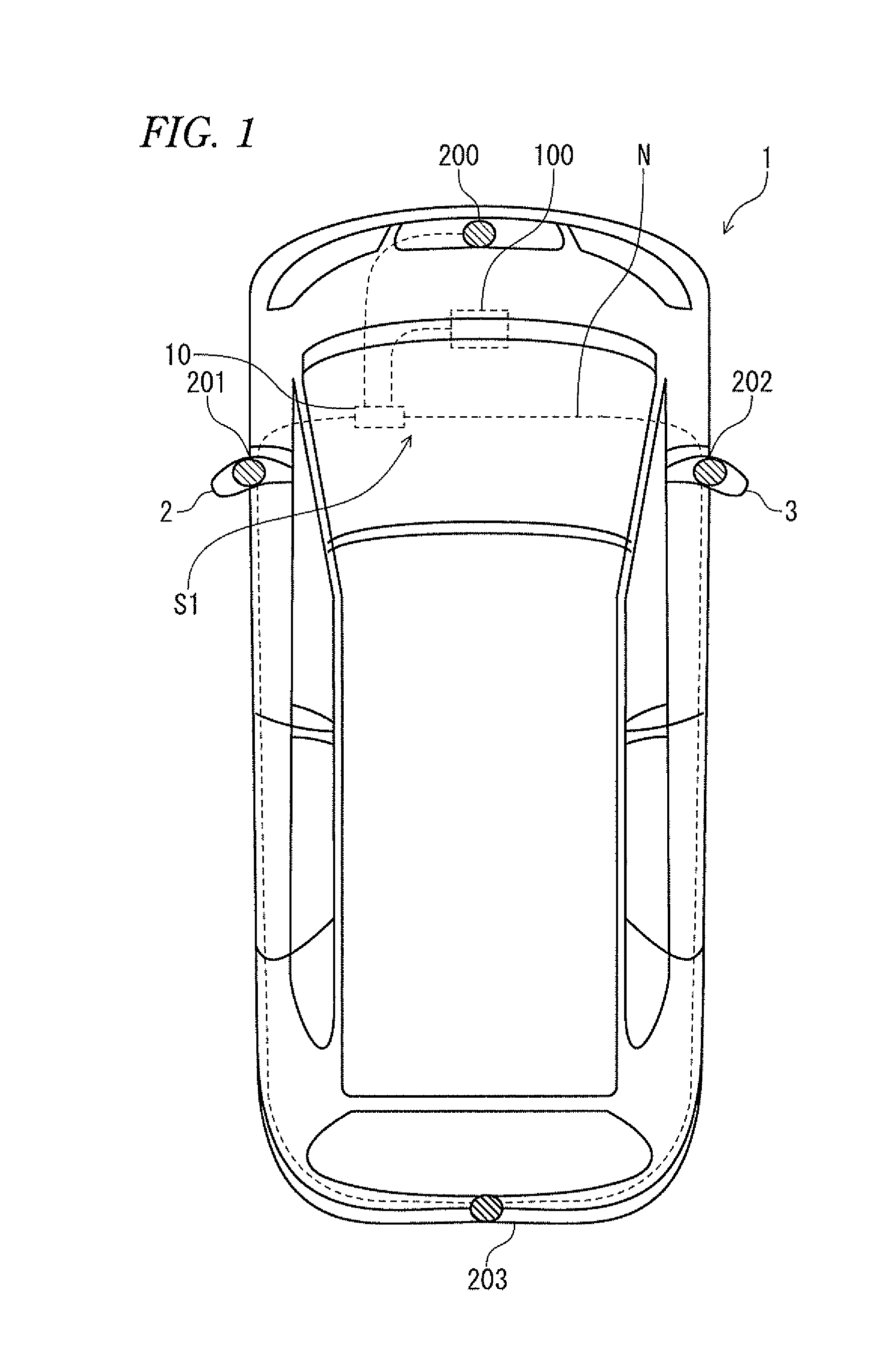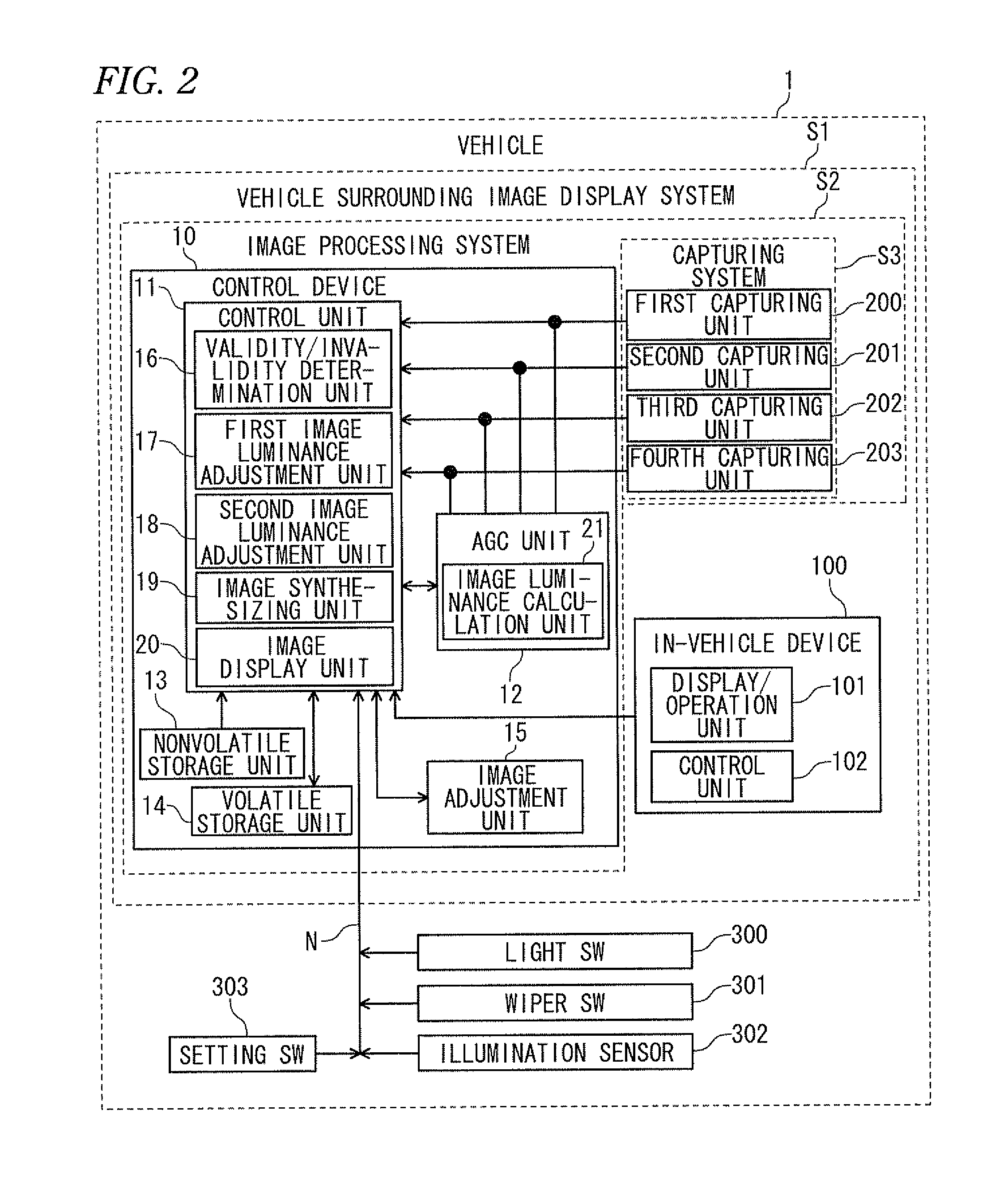Image processing device and image processing method
a technology of image processing and image, which is applied in the field of image processing device and image processing method, can solve the problems of difficult to see the corresponding image, uneven brightness of synthetic images, etc., and achieve the effects of less luminance unevenness, improved user visibility, and preventing user discomfor
- Summary
- Abstract
- Description
- Claims
- Application Information
AI Technical Summary
Benefits of technology
Problems solved by technology
Method used
Image
Examples
first embodiment
Vehicle
[0061]First, a vehicle surrounding image display system mounted on a vehicle in which an engine or a traveling electric motor, which is a driving source, is installed will be described on the basis of FIG. 1.
[0062]A vehicle surrounding image display system S1 includes an image processing system S2, an in-vehicle device 100, various kinds of switches and sensors, which are electrically connected to an in-vehicle network N.
[0063]The image processing system S2 includes a control device 10, a first capturing unit 200, a second capturing unit 201, a third capturing unit 202, and a fourth capturing unit 203, which constitute a capturing system S3.
[0064]The control device 10 is installed below a passenger seat of a vehicle 1. The in-vehicle device 100 is installed between a driver seat and the passenger seat in a dashboard of the vehicle 1. The first capturing unit 200 is installed in a front portion of the vehicle 1, the second capturing unit 201 is installed in a left side mirror ...
modified example 1
[0158]In the first embodiment, in step S1002 of FIG. 4, the AGC unit 12 determines whether or not the luminance devoted to the pixels exceeds the constant threshold value when calculating the average luminance of the images Z1 to Z4 received from the first to fourth capturing units 200 to 203. As described above, if the luminance exceeds the threshold value, the AGC unit 12 does not make the luminance included in the sum of the luminance in calculating the average luminance, and further, does not make the luminance included in the total number of pixels. However, the control unit 11 of the control device 10 may determine the brightness of the outside of the vehicle and calculate the average luminance based on the threshold value that corresponds to the brightness of the outside of the vehicle.
[0159]For example, in the case of determining that the outside of the vehicle is dark, the control unit 11 sets the threshold value to a threshold value that is higher than the above-described ...
modified example 2
[0163]In the first embodiment as described above, in step S2001 of FIG. 7, the control unit 11 receives the signal from the setting switch 303 through the in-vehicle network N, and determines whether the received signal indicates setting 1 or setting 2. If it is determined that the received signal indicates setting 1, the control unit 11 performs the first image luminance adjustment process as shown in FIG. 10, and if it is determined that the received signal indicates setting 2, the control unit 11 performs the second image luminance adjustment process as shown in FIG. 12. However, the control unit 11 determines whether or not the difference between the highest average luminance and the lowest average luminance among the average luminances of the images Z1 to Z4 received from the AGC unit 12 is larger than the prescribed value, and if it is determined that the difference is larger than the prescribed value, the control unit 11 turns on the first flag to perform the first image lumi...
PUM
 Login to View More
Login to View More Abstract
Description
Claims
Application Information
 Login to View More
Login to View More - R&D
- Intellectual Property
- Life Sciences
- Materials
- Tech Scout
- Unparalleled Data Quality
- Higher Quality Content
- 60% Fewer Hallucinations
Browse by: Latest US Patents, China's latest patents, Technical Efficacy Thesaurus, Application Domain, Technology Topic, Popular Technical Reports.
© 2025 PatSnap. All rights reserved.Legal|Privacy policy|Modern Slavery Act Transparency Statement|Sitemap|About US| Contact US: help@patsnap.com



